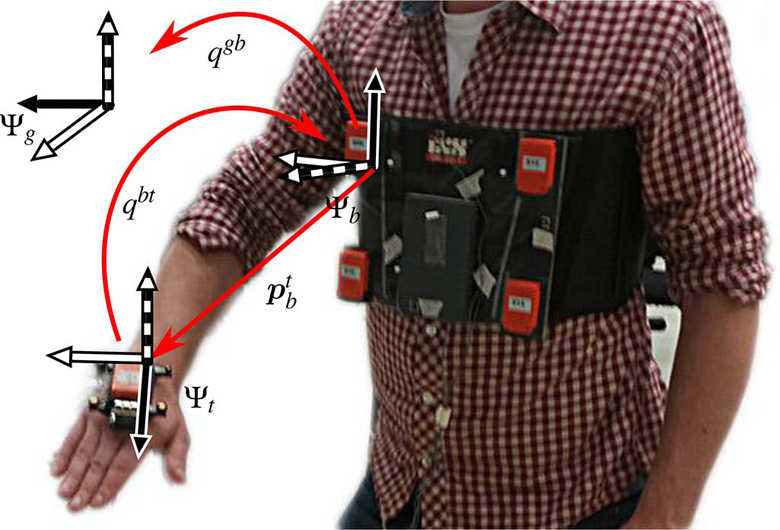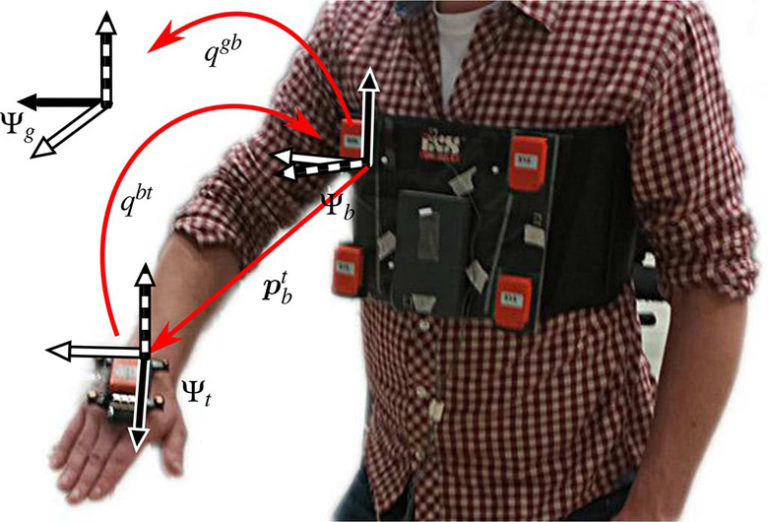
Tracking human body motions using inertial sensors has become a well-accepted method in ambulatory applications since the subject is not confined to a lab-bounded volume. However, a major drawback is the inability to estimate relative body positions over time because inertial sensor information only allows position tracking through strapdown integration, but does not provide any information about relative positions. In addition, strapdown integration inherently results in drift of the estimated position over time. We propose a novel method in which a permanent magnet combined with 3-D magnetometers and 3-D inertial sensors are used to estimate the global trunk orientation and relative pose of the hand with respect to the trunk. An Extended Kalman Filter is presented to fuse estimates obtained from inertial sensors with magnetic updates such that the position and orientation between the human hand and trunk as well as the global trunk orientation can be estimated robustly. This has been demonstrated in multiple experiments in which various hand tasks were performed. The most complex task in which simultaneous movements of both trunk and hand were performed resulted in an average rms position difference with an optical reference system of 19.7 +/i 2.2 mm whereas the relative trunk-hand and global trunk orientation error was 2.3 +/- 0.9 and 8.6 +/- 8.7 deg respectively.

